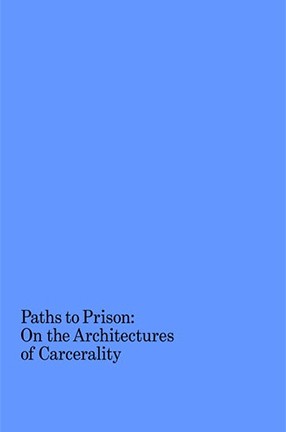How Architecture Affects the “Path to Prison”
A new GSAPP book examines the discipline’s role in the legacies of racialized coercion in the United States.

As Angela Davis has proposed, the “path to prison,” which so disproportionately affects communities of color, is guided by the conditions of daily life. Architecture, as fundamental to shaping these conditions of civil existence, must be interrogated for its involvement along this path.
That is the goal of Paths to Prison: On the Architectures of Carcerality, edited by Isabelle Kirkham-Lewitt, assistant director of GSAPP’s Columbia Books on Architecture and the City. The essays in the book implicate architecture in the longstanding and pervasive legacies of racialized coercion in the United States.
Kirkham-Lewitt discusses the book with Columbia News, along with what she’s read lately and what she’s looking forward to reading next.
Q. How did this book come about?
A. The project grew out of my dissatisfaction with the discipline of architecture for the limited ways it not only teaches architects about the built environment’s relationship to the carceral state, but also our own complicity in it. There is an enduring architectural pedagogy of the prison that relies, very simply, on the idea of it as a fixed or discrete site/typology—an architecture that one is put into and let out of. This way of thinking has opened up a very narrow politics, which consists mainly of commitments to not build prisons, solitary cells, so on. This is a necessary first step, but it does not go far enough. The book, I hope, will instigate a larger process of identifying and teasing out all the other ways that architecture is implicated in racial violence.
Q. So what exactly is architecture's role in the path to prison for people of color?
A. I love this question because it points to the promises and limitations of using the phrase “path to prison.” Despite this being the title of the book––and despite how productive it has been in helping me reorient how we see the expansive physical, social, legislative, and ideological contraptions that exist in daily life to coerce and enclose marginalized lives and communities––I remain ambivalent about “path to prison” because of the way it directs us toward the prison itself. “Paths to prison” isn’t intended to be read or used like “pipelines to prison.” I think of it more as a methodology for re-seeing carceral society and white supremacy more broadly.

Q. Do you think prisons can be designed more humanely?
A. No. This book is geared toward the abolition of prisons. It is not about good design or better prisons, but about revealing how the prison has become a fixture or a given in our world. I wish more architects were invested in this project of unbuilding and building anew, in visualizing versions of our world where the prison ceases to exist because we've rethought what safety, care, support, justice are. I see this book as an extension of documentarian Brett Story's film The Prison in Twelve Landscapes (she is also a contributor)––offering another set of texts, narratives, histories that teach us about the landscape of the prison without ever quite showing us one.
Q. As the editor, how did you decide whom to invite to contribute?
A. I started from my own position as a reader. My acknowledgments in the book are before the bibliography as a way to register my indebtedness to the people and other books that have changed how I think about architecture. I encountered most of the contributors over the years either in texts or in the footnotes of others' work. And when I didn't meet contributors this way, I met them more serendipitously in the process of reaching out and inviting people to contribute. I leaned into the unexpectedness of these encounters, especially when thinking about what one might eventually write. I resisted building the book up from a set of assumptions or expectations––which means it is sprawling, diverse, incomplete, and unfinished!
Q. What other GSAPP books coming out this year do you recommend?
A. Nights of the Dispossessed: Riots Unbound, edited by Natasha Ginwala, Gal Kirn, and Niloufar Tajeri, which chronicles recent forms of dissent, struggle, and collective action around the world. And Proxemics and the Architecture of Social Interaction by Larry D. Busbea evaluates the methods that emerged in the mid-20th century to record how culture is spatially produced and, in turn, productive of social behavior.
Q. What is the last great book you read?
A. Demonic Grounds: Black Women and the Cartographies of Struggle by Katherine McKittrick. It isn’t the last great book I’ve read, but the last great book that I’ve returned to for a second time, most recently, and that continues to inspire me.
Q. What's on your reading list now?
A. I’m currently making my way through My Grandmother’s Hands: Racialized Trauma and the Pathway to Mending Our Hearts and Bodies by Resmaa Menakem and Race and Modern Architecture: A Critical History from the Enlightenment to the Present, edited by Irene Cheng, Charles L. Davis II, and Mabel O. Wilson. I’m usually a one-book-at-a-time kind of person, but I’ve found that I engage with these two books slowly and in different ways. My Grandmother’s Hands is filled with body-centered practices that you have to commit to doing while reading, which means getting out of the thinking brain and in touch with something more visceral.